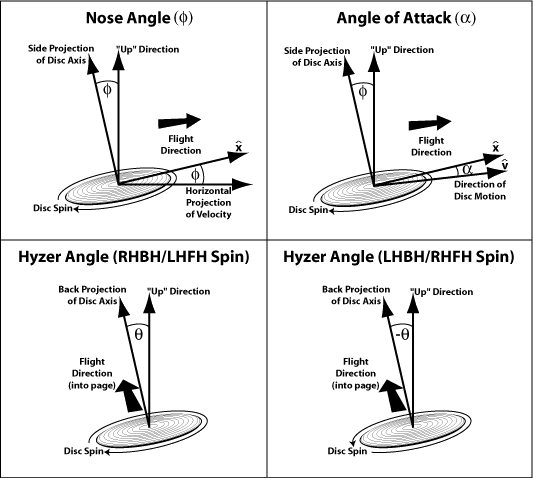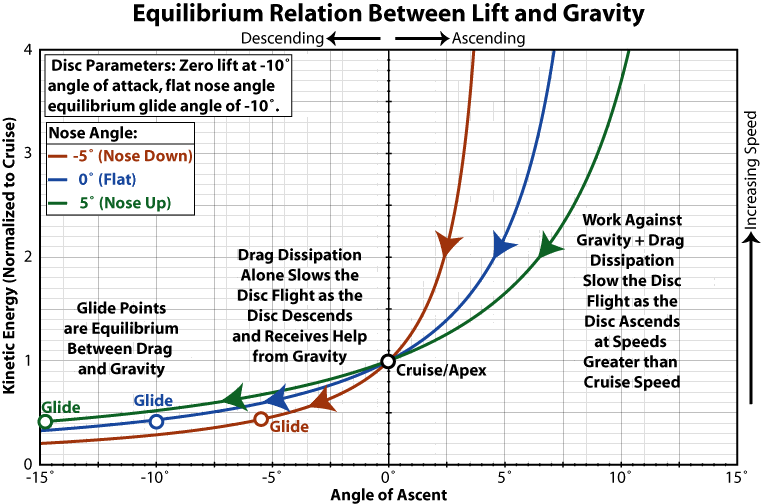Blake_T1
* Ace Member *
The angle must be referenced and I suggest a relation to horizon at the rip. What I meant was that perhaps it's beneficial to pick an angle available to even amateurs without too much trouble and still not nose up.
newbies or ams? ams i know are capable of generating enough nose down to throw most drivers. newbies are the ones who struggle with nose down.
decent rec players are capable of finding a way to throw contemporary drivers of the era. this is the way it has always been and always will be. that doesn't mean they have good form, but there's guys who can find a way to make a destroyer land in the fairway quite often even though they don't have near the power for it.
however, each disc has an idealized flight and that flight is nose down.
On the nose angle/cruise speed topic: It sounds as if the ideal nose angle is one that is low enough to account for the lift generated?
there's 2 critical nose angles.
-enough nose down to allow the flight characteristics of the disc.
-not too much nose down so that there's no lift and it burns into the ground.
a "good" nose angle falls in between those angles. the more nose down within the range of those angles, the less stable the disc will be.
Nose down orientation can be achieved simply through a proper grip. It was taught to me (either by reading what Blake wrote or Dave D., I can't remember) by describing a cocked wrist position similar to when you are pouring coffee from a coffee pot.
there's 2 other factors:
-weight forward.
-tight to the body during the pull.
more wrist extension = more potential nose down.

